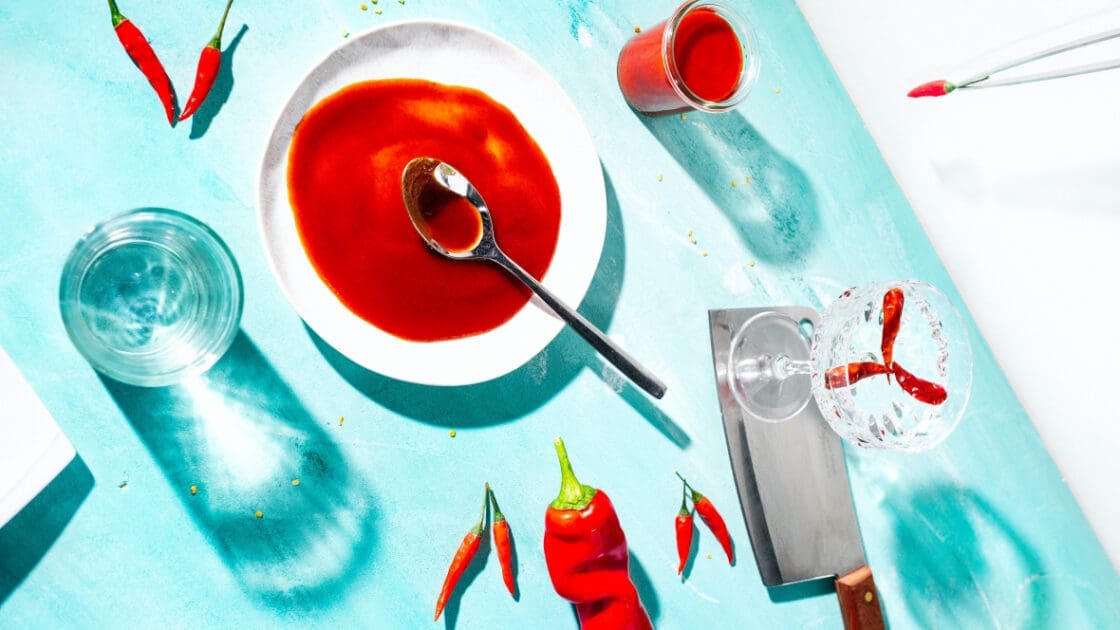Homemade 5-Pepper Hot Sauce Recipe
Here's an easy recipe to make your own hot sauce that uses 5 different peppers. Replace expensive, store bought, preservative laden bottled sauces with this simple and delicious recipe.

Hot sauce is the must-have condiment for any foodie and hostess, and can often prove to be the perfect ingredient for adding that extra bit of bite to a favorite mole or salsa recipe. However, many commercial hot sauces contain dubious ingredients such as high fructose corn syrup, highly processed vinegar, and sulfites including sodium benzoate and potassium benzoate. These sizzlers might spice up a dish, but their burn may be deteriorating your stomach lining rather than warming your belly…So, why not take matters into your own hands and make your own fiery, preservative-free hot sauce recipe?
Easy Hot Sauce Recipe
This scorching hot sauce recipe uses five different types of peppers that vary in heat from medium to high, but any type of pepper can be used depending on the spice capacity of your taste buds. Hot peppers contain capsaicin, a natural chemical that causes a burning sensation when it comes in contact with mucous membranes, thus activating our inner organs and circulatory systems. Don’t hesitate to dash a bit of this sauce on your breakfast eggs, bloody marys, soups, steamed veggies or even a sandwich to cure cold feet and fingers or a stuffed nose.
Caution with Hot Peppers!
Hot sauce laced foods feel wonderful when warming our chest or stomach, but peppers, especially the seeds, can be rather nasty to more sensitive tissues like nostrils or eyelids. Be very careful when handling hot peppers, preferably wearing gloves and avoiding wiping your face or eyes. Make sure to also thoroughly wash the dishes and utensils you have used to make the sauce.
Makes about 2 cups of hot sauce. Multiply the recipe by 5 or 10 to make a larger batch that can be easily frozen or canned for future use. Most of the peppers below can be found in dried form during the winter, but remember to adjust the amount of water depending on whether you are using dried or fresh peppers. Keep an eye on your sauce as it simmers, gradually adding water to your dried peppers if they keep soaking it all up.
Ingredients
Method
To prepare the peppers, cut off all the tops of each pepper and place the tops in your compost. Then place the peppers into a large saucepan and turn your burner to the highest setting. Once the pan is hot, add half of the water to your peppers, cover the pan with a lid, and let the peppers cook for about 10 minutes. Then add the remaining amount of water, turn your burner to a medium setting and cover the pan for another 20 minutes. In the mean time, dice the garlic and onions.
Once the peppers have become soft, add the garlic and onions to the saucepan, stir well. Let the sauce simmer for 30 minutes, adding just enough water to prevent sticking or burning. Then take the pan off the heat and transfer your sauce into a food processor. Blend the peppers, garlic and onions until smooth, then press the mixture through a sieve back into a saucepan to give your hot sauce a nice, smooth texture. The separated skins and seeds can be composted.
Once you have your blended and sieved sauce back on the stove, add the salt, vinegar and molasses. Let the sauce simmer for 5 minutes with the lid on, and then add the lemon or lime juice and stir to combine. Simmer the sauce for 15-20 minutes with the lid off, allowing any excess moisture to evaporate. The sauce should be slightly runnier than ketchup, and then it is ready to cool for refrigeration or freezing. If you are canning your sauce, begin sterilizing your jars, lids and rings while you gradually bring the sauce to 185 degrees F for pasteurization.
Serve on anything!

